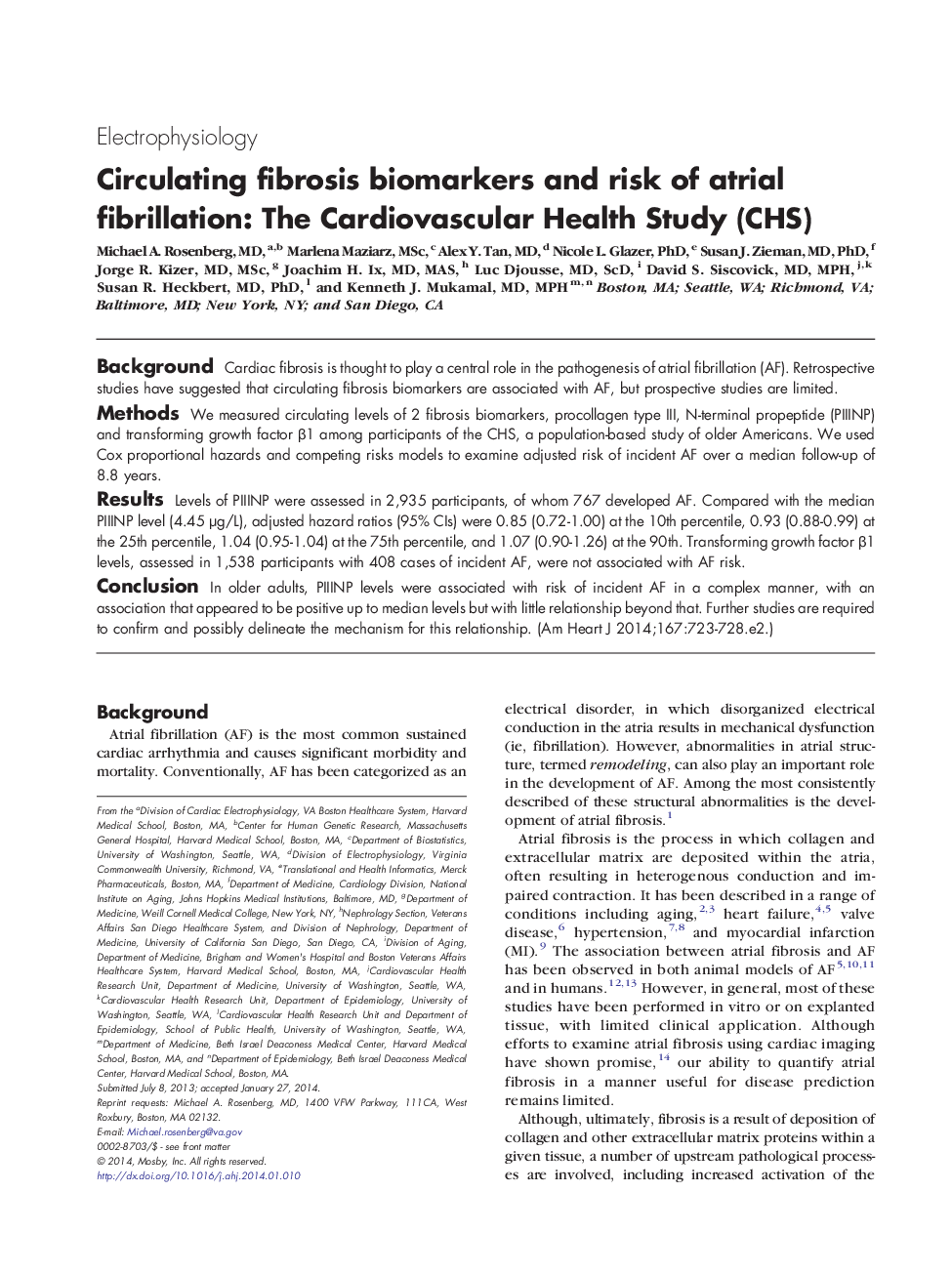| Article ID | Journal | Published Year | Pages | File Type |
|---|---|---|---|---|
| 5928422 | American Heart Journal | 2014 | 8 Pages |
BackgroundCardiac fibrosis is thought to play a central role in the pathogenesis of atrial fibrillation (AF). Retrospective studies have suggested that circulating fibrosis biomarkers are associated with AF, but prospective studies are limited.MethodsWe measured circulating levels of 2 fibrosis biomarkers, procollagen type III, N-terminal propeptide (PIIINP) and transforming growth factor β1 among participants of the CHS, a population-based study of older Americans. We used Cox proportional hazards and competing risks models to examine adjusted risk of incident AF over a median follow-up of 8.8 years.ResultsLevels of PIIINP were assessed in 2,935 participants, of whom 767 developed AF. Compared with the median PIIINP level (4.45 μg/L), adjusted hazard ratios (95% CIs) were 0.85 (0.72-1.00) at the 10th percentile, 0.93 (0.88-0.99) at the 25th percentile, 1.04 (0.95-1.04) at the 75th percentile, and 1.07 (0.90-1.26) at the 90th. Transforming growth factor β1 levels, assessed in 1,538 participants with 408 cases of incident AF, were not associated with AF risk.ConclusionIn older adults, PIIINP levels were associated with risk of incident AF in a complex manner, with an association that appeared to be positive up to median levels but with little relationship beyond that. Further studies are required to confirm and possibly delineate the mechanism for this relationship.
